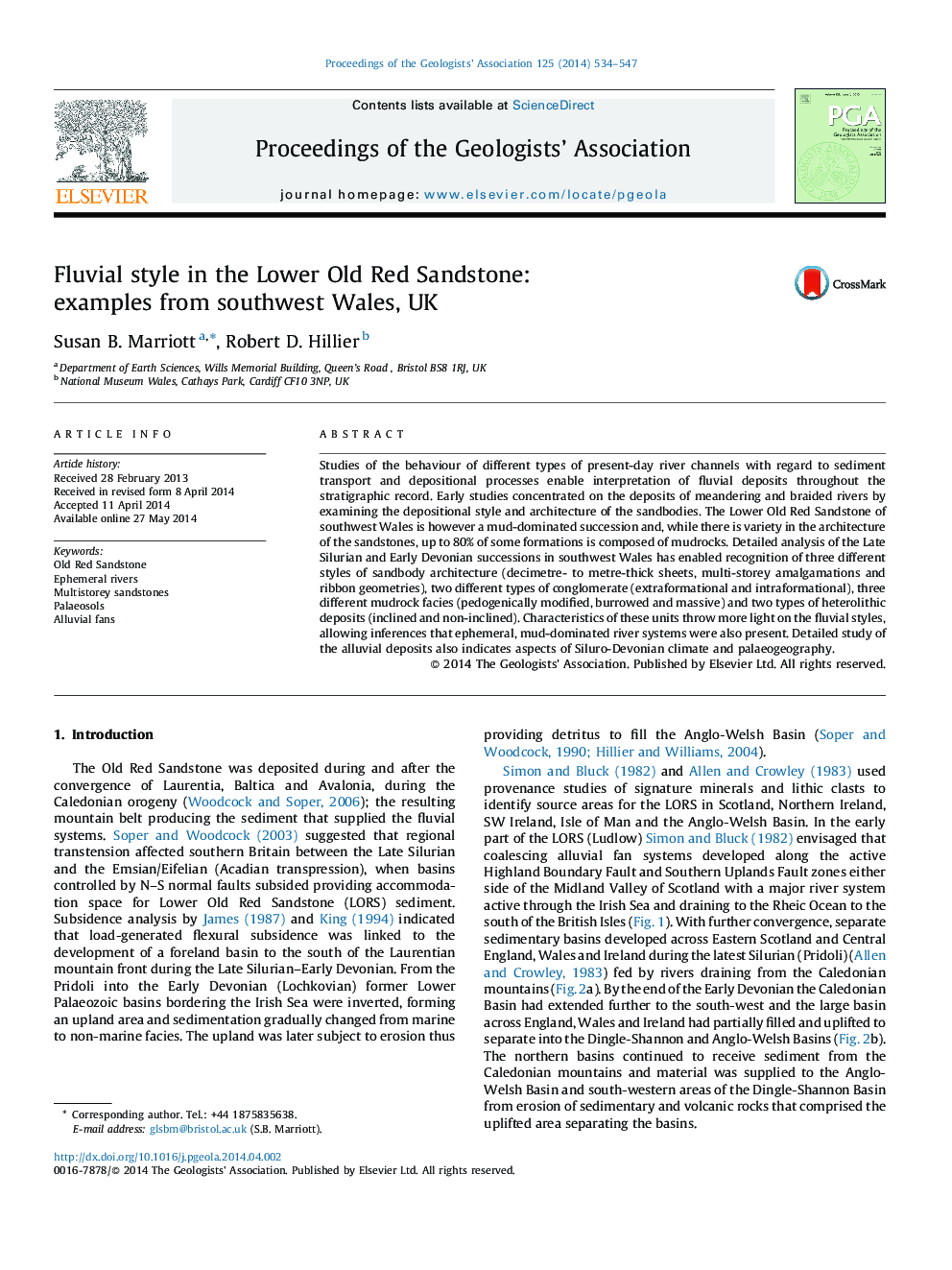| Article ID | Journal | Published Year | Pages | File Type |
|---|---|---|---|---|
| 4734998 | Proceedings of the Geologists' Association | 2014 | 14 Pages |
Studies of the behaviour of different types of present-day river channels with regard to sediment transport and depositional processes enable interpretation of fluvial deposits throughout the stratigraphic record. Early studies concentrated on the deposits of meandering and braided rivers by examining the depositional style and architecture of the sandbodies. The Lower Old Red Sandstone of southwest Wales is however a mud-dominated succession and, while there is variety in the architecture of the sandstones, up to 80% of some formations is composed of mudrocks. Detailed analysis of the Late Silurian and Early Devonian successions in southwest Wales has enabled recognition of three different styles of sandbody architecture (decimetre- to metre-thick sheets, multi-storey amalgamations and ribbon geometries), two different types of conglomerate (extraformational and intraformational), three different mudrock facies (pedogenically modified, burrowed and massive) and two types of heterolithic deposits (inclined and non-inclined). Characteristics of these units throw more light on the fluvial styles, allowing inferences that ephemeral, mud-dominated river systems were also present. Detailed study of the alluvial deposits also indicates aspects of Siluro-Devonian climate and palaeogeography.
